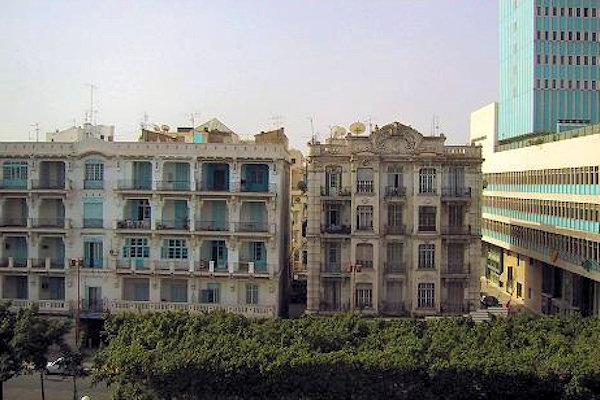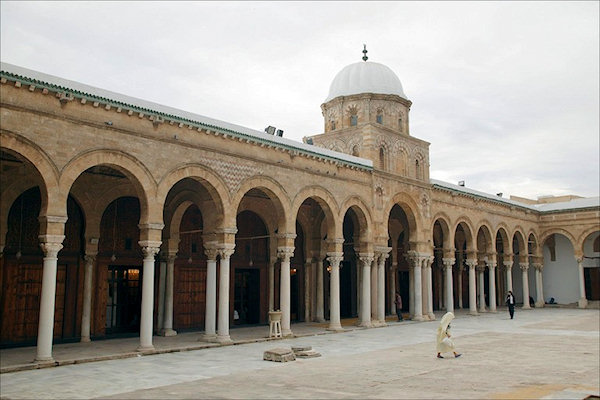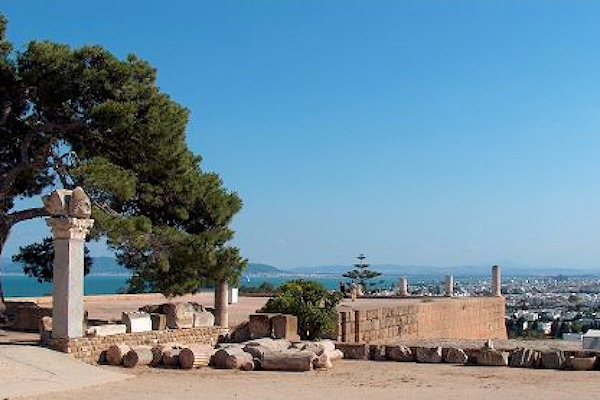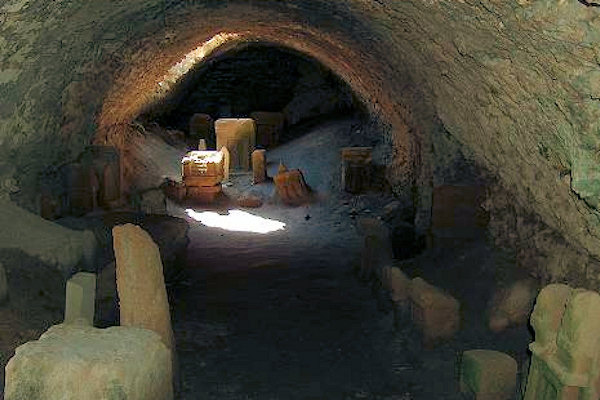Tunesia
Things to Do
Tunis
 |
|||||
Just through the Bab el Bahr (also known as the Sea Gate) begins the modern city, or Ville
Nouvelle, transversed by the grand Avenue Habib Bourguiba, where the colonial-era buildings provide
a clear contrast to smaller, older structures.
As the capital city of the country, Tunis is the focus of Tunisian political and administrative life; it is
also the centre of the country's commercial activity.
The medina is found at the centre of the city: a dense agglomeration of alleys and covered passages,
full of intense scents and colours, boisterous and active trade, and a surfeit of goods on offer ranging
from leather to plastic, tin to the finest filigree, tourist souvenirs to the works of tiny crafts shops.
Halfaouine is one of two important food markets of Tunis, as well as a part of town with a distinct
identity of its own.
 |
|||||
The Al-Zaytuna Mosque is the oldest mosque in the Capital of Tunisia and covers an area of
5.000 square metres with nine entrances. It has 160 authentic columns brought originally from the ruins of
the old city of Carthage.
The exact date of building varies according to source, but most scholars agreed that the strongest by
evidence is 703 AD.
The Cathedral of St Vincent de Paul is a Roman Catholic cathedral in Tunis. Dedicated to Saint
Vincent de Paul, patron saint of charity, the cathedral is the see of the Archdiocese of Tunis
The church was built in a mixture of styles, including Moorish revival, Gothic revival, and Neo-Byzantine.
Construction began in 1893 and the church was opened at Christmas 1897, albeit with temporary wooden
belltowers owing to a shortage of funds.
Carthage
 |
|||||
Metropolis of Punic civilization in Africa and capital of the province of Africa in Roman times, Carthage
has played a central role in Antiquity as a great commercial empire.
Founded at the end of the 9th century BC by the legendary Princess Elyssa-Dido Carthage produced a
warrior and strategy genius in the person of Hannibal.
The major known components of the site of Carthage are the acropolis of Byrsa, the Punic ports, the Punic
tophet, the necropolises, theatre, amphitheatre, circus, residential area, basilicas, the Antonin baths,
Malaga cisterns and the archaeological reserve.
Also remarkable is the presence of the Cathedral of St Louis on the hill overlooking Carthage: it was
built in the 1890s on the spot where the French King Louis IX died in 1270. Today the cathedral is
used only for cultural purposes.
Most modern archaeologists agree that child sacrifice was performed by the Carthaginians at the spot of the Tophet, just a few hundred metres from the Punic port. We hear of child sacrifice from both legends and
Roman stories. But while these rituals most likely have been performed, they were hardly as common as claimed.
It is believed that they were only performed in times of extraordinary hardship.
 |
|||||
In many cases, the Carthaginians used lambs or kid goats as replacement sacrifice, and in some cases
perhaps even dead children.
The name 'Tophet' is not the original name, but comes from the Biblical name for sanctuaries of child
sacrifice in the Middle East. We do not know what the Carthaginians called this place.
The Antonine Baths were once the very largest in the Roman empire. The main pool was as big as an
Olympic pool. The curved public latrines were at first take for a theatre.
Very little of the upper structures remain, but the lower halls are so huge and extensive that it is hard not be amazed.
The baths were
constructed from 145 to 165 AD, and is perhaps the best illustration as to how rich and wealthy Carthage was
during the Roman era.
As its name indicates, Building with Columns its original purpose is not known.
This structure,
may have been the Baths of Gargilius.
In that case it has played a role in Christian history, being
the place where St Augustine called a conference of bishops in 411 in order to defeat the
Christian Donastist orientation.
Thuburbo Majus
 |
|||||
Thuburbo Majus or Colonia Julia Aurelia Commoda, its Roman name, was originally a Punic town,
later founded as a Roman veteran colony by Augustus in 27 BC.
Military veterans were sent to Thuburbo, to allow them to start their post-army lives with land of their own.
Its strategic location and access to trade routes made it an important establishment. Ruins of the town are in
the middle of the countryside with no towns in close proximity.
Most of the town was built around 150–200 AD, and restored in the 4th century after a 3rd-century crisis.
The Capitol and Forum were built around 168 AD. The Forum was 49 times 49 metres and was
colonnaded on the 3 sides not facing the Capitol.
The Capitol was dedicated to the triad of Jupiter,
Juno and Minerva.
All that have survived of the god statues is the head and a foot of Jupiter.
It now stands in the Bardo Museum in Tunis.
In the cellar of the Capitol, the Byzantine built an oil press. The quarters here were originally used as
public baths, but easy ways of making valuable products were of great importance to the far poorer Byzantine
civilization.
Thuburbo Majus has two sections of baths, the Winter Baths and the Summer Baths.
 |
|||||
The Winter Baths is 1,600 m² and consists of 20 rooms. The Summer Baths are even larger, 2,400 m², but as
it now stands less impressive to the visitor.
The tiny Temple of Mercury, from 118 AD, deviates obviously from the Roman plan for a temple. Eight
columns formed a circle, an arrangement with African origins. Some of these still stand.
In the eastern sections of the town, lies a church built on the grounds of a former temple. Usually
disregarded by historians and guides it is still worth a stop, mainly because of the unusual fresh blue
colour of its columns. The church is not huge, but has an apse and baptismal fountain.
The Sanctuary of Baalat (a Punic goddess), is really small, but the platform, the flight of steps
and two columns have survived into our times.
Probably the most attractive structure at Thuburbo Majus is the Palaestra of Petronii.
It dates back
to 225 AD, being one of the later additions to the town during its heyday.
The grounds were the gymnastics
area, the place to perform the noble arts of wrestling and boxing.
Kairouan
 |
|||||
Kairouan was founded in about the year 670 when the Arab general Uqba ibn Nafi of
Amir Muauia selected a site in the middle of a dense forest, then infested with wild beasts and reptiles,
as the location of a military post for the conquest of the West.
Despite the transfer of the political capital to Tunis in the 12th century, Kairouan remained the
Maghreb's principal holy city.
The medina, with its imposing walls and monumental gates encloses lovely mosques, an ancient well and
hundreds of shops where world famous Kairouan carpets of pure wool are woven and sold and where the visitor
can admire the handicrafts of artisans in copper, leather, and in the traditional jebba and burnous, ornate
and richly adorned or elegantly natural.
Kairouan is also noted for its brasswork, intricately designed trays, vases and bowels, embossed or engraved
as well as leatherwork ranging from camel saddles to fine slippers.
 |
|||||
The Great Mosque of Kairouan, built around 670 AD is spread over a surface area of 9.000 square metres
and it is one of the oldest places of worship in the Islamic world, as well as a model for all later mosques in
the Northwest Africa.
The courtyard is a vast trapezoidal area and is surrounded on all its four sides by a portico with double
rows of arches, opened by slightly horseshoe arches supported by columns in various marbles, in granite or
in porphyry, reused from Roman, Early Christian or Byzantine monuments particularly from Carthage. Access to
the courtyard by six side entrances dating from the ninth and thirteenth centuries.
However modest the Bi'r Barouta is - entrance through a small carpet shop and an interior no
more spectacular than a middle-class family's courtyard- this well is and one of the holiest sites in the
city.
The legends says that Oqba bin Nafi found a golden cup he had lost in the Zamzam well in Mecca.
This was considered a proof that there was a underground river between Mecca and Kairouan, making the water of
Bi'r Barouta holy.
Even today, the local religious traditions says that a Muslim drinking water from Bi'r Baruta
a number of times is exempted from performing the pilgrimage to Mecca, a journey both long and expensive.
Tozeur
 |
|||||
Tozeur a prosperous town, was once, like the mountain oases, one of the Roman outposts and a
stopping point for the caravans coming from the sub Sahara to trade with the coastal cities of the Mediterranean,
it now owes its fame and affluence to the stately palm and its world renowned dates - deglet nour
"fingers of light".
The beauty of this oases, its fabulous 14th century medina and botanical gardens attracts visitors from all
over the world.
The groves of over 200,000 palms are watered by hundreds of natural springs and the Belvedere park offers a
panoramic view.
The remarkable architecture of Tozeur , beige sun baked bricks set in geometric patterns, Moorish arches and
high vaulted ceilings and the shops offering locally woven carpets, Berber jewelry and ornaments, promise
visitors another aspect of Tunisia.